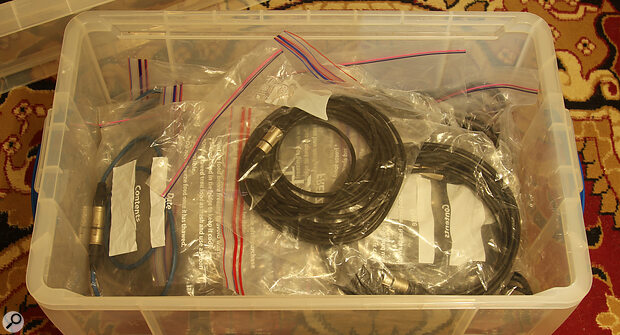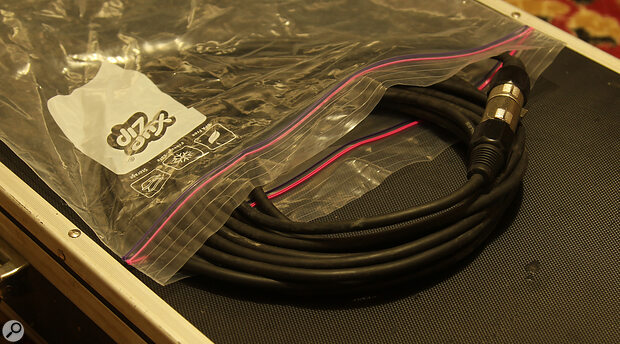Are you forever having to untangle your mic leads? Well, sandwich bags might just be the answer...
There are many ways to store XLR cables. Some people use those Velcro cable ties to keep them coiled up before stashing them in a trunk, while some folks like to connect them all end‑to‑end and roll them up on a drum like a garden hose. The latter option has the advantage that you can use a cable tester on all of them at once — though if one happens to be faulty, you have to play the old ‘serial Christmas tree dead lightbulb elimination’ game. For that classic Sun Studios vibe, you can even cover a wall with pegboard and hang your XLRs on hooks (bonus points for outlining them so you can see which cable goes where...).
My preferred method, though, involves coiling them up, clicking the XLR plugs together, and stuffing them individually into A4‑sized sandwich bags. The beauty of this is that it completely eliminates any chance of them getting into a tangle: when I reach for one cable, I get one cable, not four cables in a Gordian knot.
There are other advantages, too. For one, sandwich bags are somehow much less easy to lose than Velcro cable ties, and it only takes one un‑Velcroed cable in a trunk to cause mayhem. Secondly, the sandwich bags mean I can immediately see if I’m holding one of my long XLRs or one of the short ones. And, when my box of sandwich‑bagged cables makes one of its occasional outings to a gig, an empty sandwich bag at the end of the night immediately alerts me to the fact that one of my XLRs has gone walkies!
With a little practice, it’s possible to frisbee a bagged‑up XLR straight into the cable box from across a modestly sized venue.
Finally, and perhaps best of all, with a little practice it’s possible to frisbee a bagged‑up XLR straight into the cable box from across a modestly sized venue.
There is a bit of a knack to coiling XLRs so that they fit neatly into the bags (I found I had to go a teeny bit tighter than usual to get them into A4‑sized bags), but master that and you’ll be in a world of cable bliss. In fact, I’ve found the sandwich bag method so successful that I’ve applied it across the board, and now have boxes full of sandwich‑bagged cables for balanced leads, unbalanced ones, and even PSUs, where the see‑through bags let me see at a glance exactly what voltage, current rating and polarity each one is.
 No more tangles! Once you’ve sandwich‑bagged your XLRs, simply pop them into your preferred clip‑lock storage solution.
No more tangles! Once you’ve sandwich‑bagged your XLRs, simply pop them into your preferred clip‑lock storage solution.

